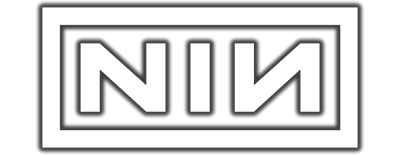Your Rating (Click a star below)
![]()
![]()
![]()
![]()
![]()
![]()
![]()
![]()
![]()
![]()
Total Rating
![]() (7 users)
(7 users)
577,513
3,745,536
3D Track Thumb![]()
Track Description
Available in:
"Hurt" is a song by American industrial rock band Nine Inch Nails from their second studio album, The Downward Spiral (1994). It was released on April 17, 1995 as a promotional single from the album. The song received a Grammy Award nomination for Best Rock Song in 1996, but ultimately lost to Alanis Morissette's "You Oughta Know".
In 2002, "Hurt" was covered by country music singer Johnny Cash to commercial and critical acclaim. It attracted praise from Reznor for its "sincerity and meaning" while ending up being one of Cash's final hits released before his death, the related music video being considered one of the greatest of all time by publications such as NME.
Originally recorded by Nine Inch Nails, the song "Hurt" has been adapted and covered by several artists, including Johnny Cash and Leona Lewis. The song includes references to self-harm and heroin addiction, although the overall meaning of the song is disputed. Some listeners contend that the song acts as a suicide note written by the album's protagonist, as a result of his depression, while others claim that it describes the difficult process of finding a reason to live in spite of depression and pain.
The music video for Nine Inch Nails' original version of "Hurt" is a live performance that was recorded before the show in Omaha, Nebraska on February 13, 1995 and can be found on Closure and the DualDisc re-release of The Downward Spiral. The audio portion appears on the UK version of Further Down the Spiral. The version released on Closure differs slightly from the video originally aired on MTV. In addition to using an uncensored audio track, the Closure edit shows alternate views of the audience and performance at several points during the video.
To film the video, a scrim was dropped in front of the band on stage, onto which various images, such as war atrocities, a nuclear bomb test, survivors of the Battle of Stalingrad, a snake staring at the camera, and a time-lapse film of a fox decomposing in reverse, were projected, adding visual symbolism to fit the song's subject matter. A spotlight was cast on Reznor so that he can be seen through the images. Compared to the live renditions performed on future tours, this version most resembles the studio recording with its use of the song's original samples.
There are also official live recordings on the later releases And All that Could Have Been and Beside You in Time. Each version features distinct instrumentation by the varying members of the band in the respective eras.

File Hashes
 HASH1: C6425DBC61EA7A2B
HASH1: C6425DBC61EA7A2B
 HASH2: 807033BDB96E7E5B (FLAC)
HASH2: 807033BDB96E7E5B (FLAC)
 HASH1: 84F84116993239AB
HASH1: 84F84116993239AB
 HASH2: B8DC53069CE4BFB1 (MP3)
HASH2: B8DC53069CE4BFB1 (MP3)
 HASH1: BA0E760DEC7F6C83
HASH1: BA0E760DEC7F6C83
 HASH2: 80728EFF8D6F146B (FLAC)
HASH2: 80728EFF8D6F146B (FLAC)
Available in:
"Hurt" is a song by American industrial rock band Nine Inch Nails from their second studio album, The Downward Spiral (1994). It was released on April 17, 1995 as a promotional single from the album. The song received a Grammy Award nomination for Best Rock Song in 1996, but ultimately lost to Alanis Morissette's "You Oughta Know".
In 2002, "Hurt" was covered by country music singer Johnny Cash to commercial and critical acclaim. It attracted praise from Reznor for its "sincerity and meaning" while ending up being one of Cash's final hits released before his death, the related music video being considered one of the greatest of all time by publications such as NME.
Originally recorded by Nine Inch Nails, the song "Hurt" has been adapted and covered by several artists, including Johnny Cash and Leona Lewis. The song includes references to self-harm and heroin addiction, although the overall meaning of the song is disputed. Some listeners contend that the song acts as a suicide note written by the album's protagonist, as a result of his depression, while others claim that it describes the difficult process of finding a reason to live in spite of depression and pain.
The music video for Nine Inch Nails' original version of "Hurt" is a live performance that was recorded before the show in Omaha, Nebraska on February 13, 1995 and can be found on Closure and the DualDisc re-release of The Downward Spiral. The audio portion appears on the UK version of Further Down the Spiral. The version released on Closure differs slightly from the video originally aired on MTV. In addition to using an uncensored audio track, the Closure edit shows alternate views of the audience and performance at several points during the video.
To film the video, a scrim was dropped in front of the band on stage, onto which various images, such as war atrocities, a nuclear bomb test, survivors of the Battle of Stalingrad, a snake staring at the camera, and a time-lapse film of a fox decomposing in reverse, were projected, adding visual symbolism to fit the song's subject matter. A spotlight was cast on Reznor so that he can be seen through the images. Compared to the live renditions performed on future tours, this version most resembles the studio recording with its use of the song's original samples.
There are also official live recordings on the later releases And All that Could Have Been and Beside You in Time. Each version features distinct instrumentation by the varying members of the band in the respective eras.
File Hashes





 90%
90%